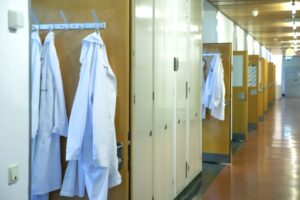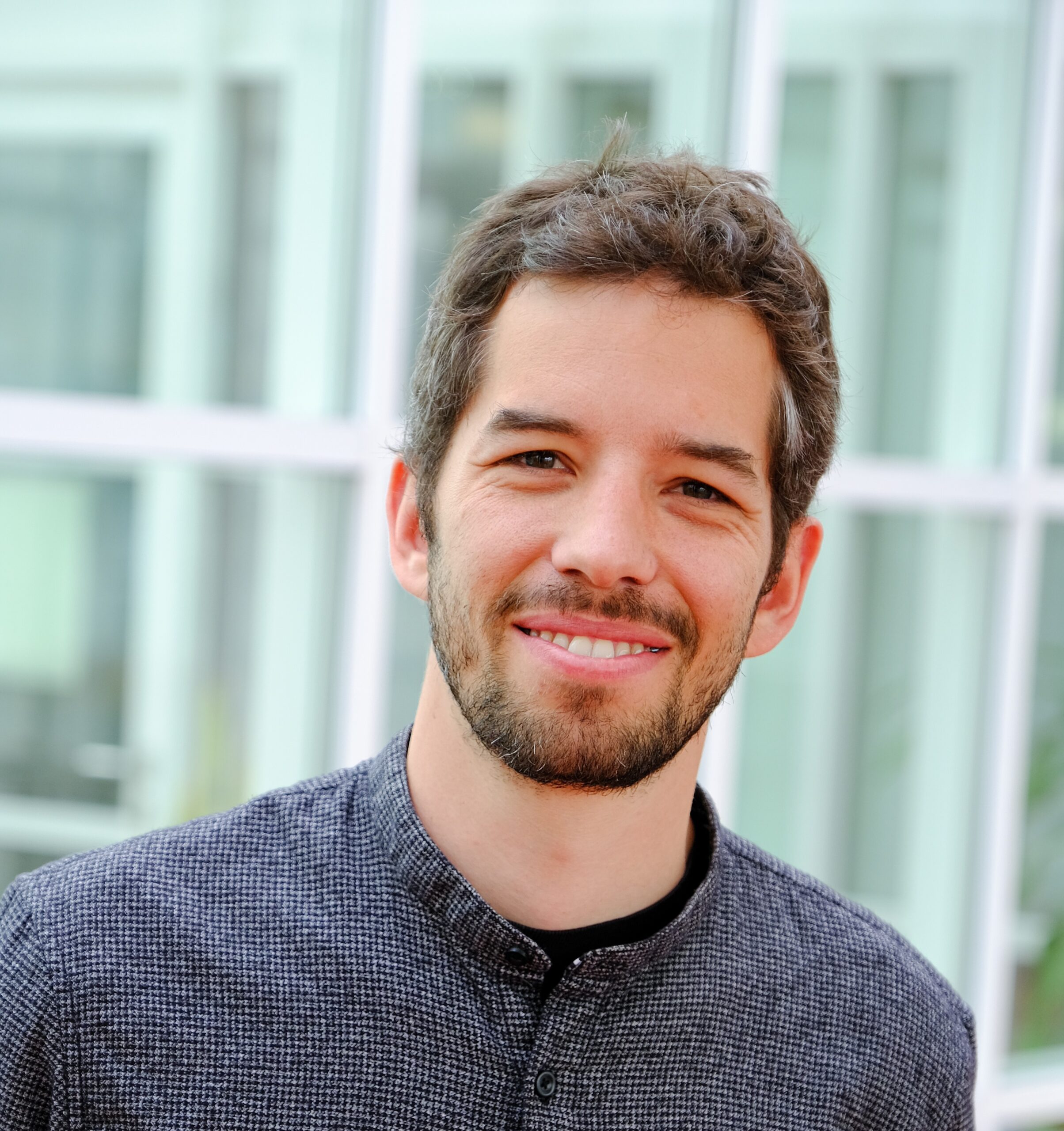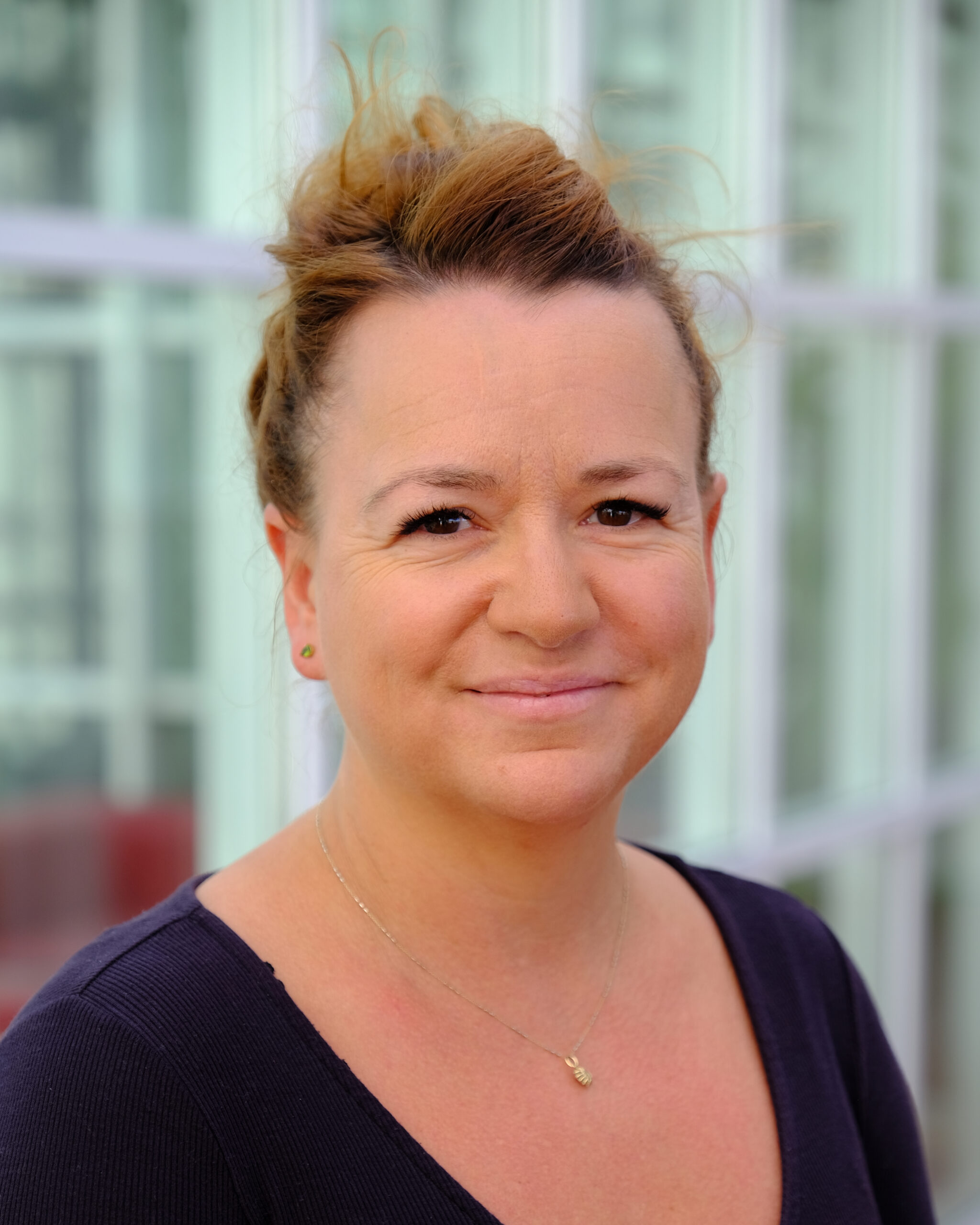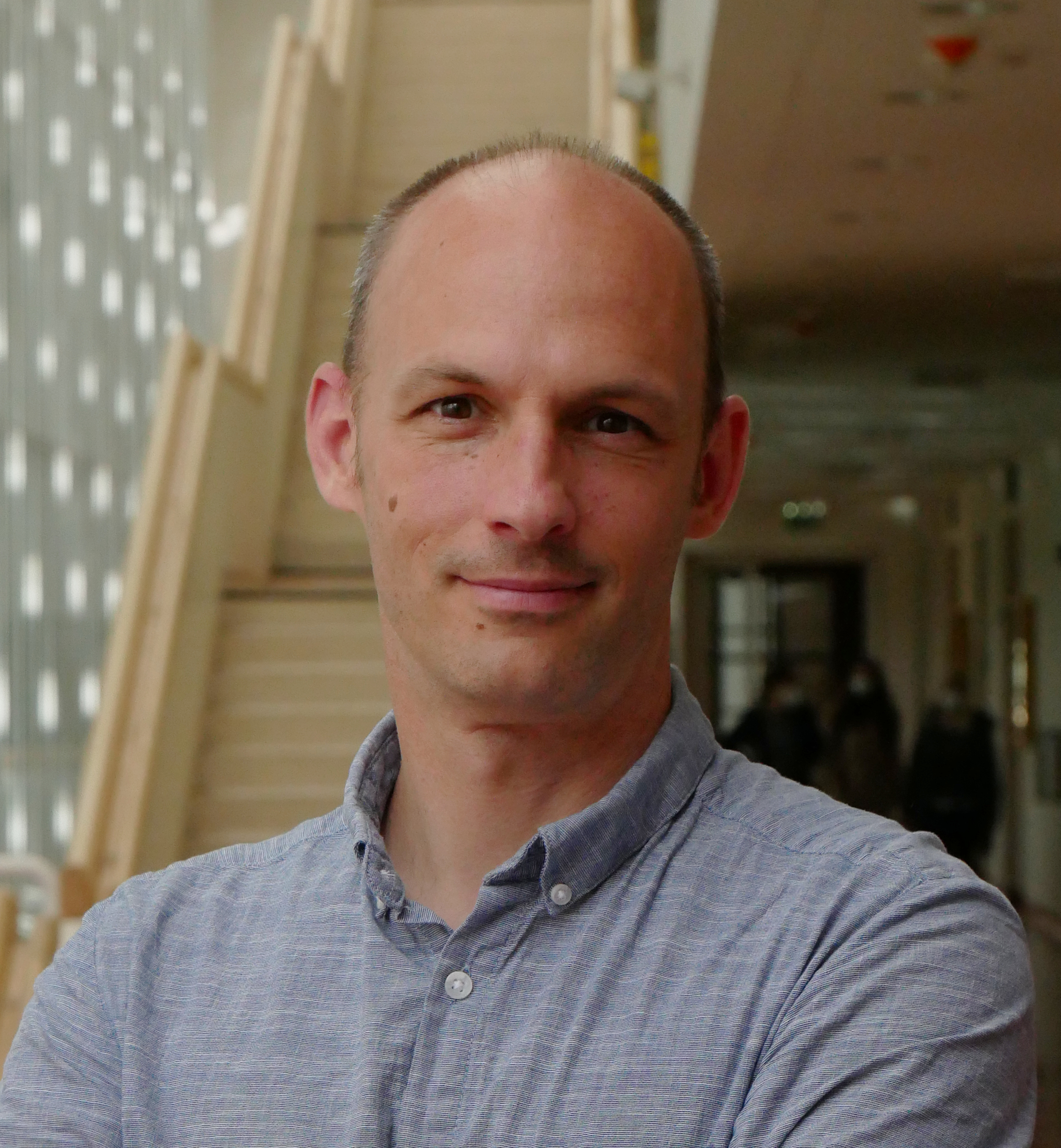
-
Aberger Lab | Molecular Cancer Biology

Head of Research Group:
Fritz Aberger
Hellbrunner Straße 34, 5020 Salzburg
Tel.: +43 662 8044-5792
Email: fritz.abefa@rgepLPr@plus3iJ.ac.atV1-
Web: /aberger
ORCID: 0000-0003-2009-6305
ResearcherID: B-6357-2012
Cancer is a leading cause of death worldwide. Despite considerable progress in the treatment of cancer patients, the incidence and death toll are globally increasing, urgently calling for intensified research to better understand the molecular basis of this disease and to identify improved strategies and drugs for personalized therapy.
As partner within national and international research consortia and active founding member of the Cancer Cluster Salzburg (CCS), the Aberger lab applies a combination of in vivo cancer models and state-of-the art cellular, molecular and systems biology approaches, to decipher druggable molecular pathways such as Hedgehog/GLI signaling and to unravel novel molecular targets for cancer therapy. A central research focus of the group is on the analysis of pathways controlling the malignant potential of cancer stem cells (CSC), a small subpopulation of tumor cells responsible for cancer growth, metastasis, drug resistance and disease relapse. In particular, the lab tries to understand the interaction of CSC with the tumor microenvironment including the immune system.
The core competence of the group is the functional analysis and cross-talk of oncogenic Hedgehog signaling and GLI transcription factors with other cancer pathways in malignant cells and the tumor environment. By bringing together the expertise of molecular tumor biologists and clinicians within the Cancer Cluster Salzburg, the Aberger group aims to translate preclinical studies to clinical application for better therapeutic outcome.
As major contributions, the Aberger lab has recently deciphered oncogenic signals and novel drug targets responsible for malignant disease progression. In collaboration with partners from the biotech industry, the group works on the development of novel drugs for improved anti-cancer (immuno)therapies, including innovative inhibitors of malignant cancer stem cells.
Cancer is a leading cause of death worldwide. Despite considerable progress in the treatment of cancer patients, the incidence and death toll are globally increasing, urgently calling for intensified research to better understand the molecular basis of this disease and to identify improved strategies and drugs for personalized therapy.
More information
-
Brandstetter Lab | Structure and mechanism of proteins in immunology and blood coagulation

Head of Research Group:
Hans Brandstetter
Hellbrunner Straße 34, 5020 Salzburg
Tel.: +43 662 8044-7270
Email: johan65LHdV1n.br_fUz@7handstetter@HdV1xw.plusHdV1xw..acSnaWTr6.atjp2A3qt
Web: /brandstetter
ORCID: 0000-0002-6089-3045
ResearcherID: E-6754-2011
The research of our team focuses on proteolytic enzymes, their cofactors, substrates and inhibitors. Proteolytic enzymes are master switchers in health and disease. By their highly specific recognition and modification of protein substrates, proteases serve as signaling and decision matrices. Of particular interest to us are proteolytic actions in the field of immunology/allergy, blood coagulation, and cancer.
We employ a broad spectrum of biochemical, biophysical and computational techniques to characterize the molecular function of important target proteins. Most importantly, we use x-ray crystallography to determine the three-dimensional architecture of the molecular targets. The structural information guides us to rationalize and experimentally test hypotheses about possible molecular mechanisms of action as well as their significance in the molecular, cellular and systemic context.
Questions of immunological interest are linked to the cellular pass control which is implemented via antigen processing and presentation. Each cell has to identify itself towards the immune system by presenting intracellular peptides at the cell surface. Despite its enormous efficiency, some harmful cells escape the screening (pass control) of the immune system, e.g., by presenting unsuspicious peptides only. On the other side, allergens, which are per se harmless proteins, can trigger excessive immune reactions. We investigate the complex protease machines involved in antigen processing. A detailed understanding promises treatment options against immunological and infectious diseases, and also tumors.
The (innate) immune system is multiply linked to the blood coagulation system which primarily serves to stop life-threatening bleeding without causing fatal vessel occlusions (thrombosis). For this purpose nature employs a molecular proofreading principle that requires simultaneous and concerted molecular actions. We investigate disharmonies in these molecular orchestra that lead to bleeding disorders such as hemophilia.
More information
-
Fortelny Lab | Computational Systems Biology

Head of Research Group:
Nikolaus Fortelny
Hellbrunner Straße 34, 5020 Salzburg
Tel.: +43 662 8044-5797
Email: nikolWhEaus.URIforteyBilny@hEjplus.Jzbac.ahEjtV1@
Web: /fortelny
ORCID: 0000-0003-4025-9968
ResearcherID: FZY-1778-2022
The group’s research aims to understand the function and dysfunctions of biological systems on a molecular level, taking into account the complexity arising from the interplay of biomolecules in large regulatory networks. This work is enabled by the availability of big biological datasets that are generated by high-throughput, biochemical profiling methods. Relevant data include transcriptomics, proteomics, or epigenomics, which are often assayed in combination (“multi-omics”) and at cellular resolution (“single-cell”). The computational methods we use mirror this biological complexity, spanning advanced statistics, machine learning, and network science.
Multi-omics and single-cell analyses
Molecular systems are being profiled on multiple layers and on the single-cell level. Interpretation of the resulting data requires multiple steps of bioinformatic processing and downstream exploratory analysis. We apply and develop computational methods that help with the analysis and interpretation of various -omics data including transcriptomics, proteomics, and epigenomics.
Network biology
Biological regulation is often thought to occur in confined events and signaling pathways but has also been shown to form large and complex networks with extensive cross-talk. Network biology (based on graph theory) provides the computational and mathematical tools to study complex systems and to predict novel regulatory events and biological pathways. We apply network biology to better understand regulation within and between cells.
Machine learning
Big biological data require computational tools that can handle (and profit from) the availability of large datasets. Machine learning excels at learning complex relationships (for example to recognize cats in images), and provides a rigorous framework for predicting one type of data from another. We apply and develop machine-learning approaches tailored to studying biological systems and predicting across multi-omics data.
More information
-
Gratz Lab | Tissue Immune Regulation

Head of Research Group:
Iris Gratz
Hellbrunner Straße 34, 5020 Salzburg
Tel.: +43 662 8044-5764
Email: iris.gdnKJratz@xOdnplusv7om.ac.at
Web: /gratz
ORCID: 0000-0001-7470-7277
ResearcherID: L-6267-2015
Allergy and autoimmunity are chronic and debilitating conditions for which current treatment approaches are unsatisfactory. These inflammatory diseases are caused by immune cells attacking harmless (self-)antigens in host tissues, which they are supposed to protect. However, further basic research is required to fully understand the disease mechanisms and immune-regulatory processes in the target tissues.
Our research aims to elucidate the mechanisms that control the balance of immune activation versus tolerance because this balance ultimately determines the outcome and severity of disease. Understanding these mechanisms will help to develop novel therapeutic strategies.
In our studies of autoimmunity and allergy we focus on immune-regulatory processes of two major epithelial body surfaces, skin and lung. Our main research questions are:
1. The role of Foxp3+ regulatory T cells (Treg) in inflammation, their generation and recruitment to the target tissues
2. Immune cell stability and memory formation of T and B cells with an emphasis on apoptotic processes and their regulation by cytokines
3. Studies of human immune responses in clinical settings such as gene therapy
4. Function of human skin resident T cells in tissue regeneration
In our projects we study cellular processes of T and B cell differentiation, memory formation, and IgE-regulation. For these studies we use innovative mouse models and humanized mice, which we manipulate with genetic and biomolecular tools. We combine the use of these transgenic and knock-out mice with the application of biologics, antibodies and small molecules to manipulate immune cells in vivo.
In all of our approaches we focus not only on the phenotypes of selected lineages but also on the crosstalk between immune cells of the innate and adaptive immune system as well as tissue cells.
More information
-
Horejs-Höck Lab | Molecular Immunology & Signal Transduction

Head of Research Group:
Jutta Horejs-Höck
Hellbrunner Straße 34, 5020 Salzburg
Tel.: +43 662 8044-5736
Email: jut8lBRVzta.YcgP1Ohorejs-hoecGbQdr_k@plus-6K9pU.ac.HE-6K9at
Web: /horejs-hoeck
ORCID: 0000-0002-0984-204X
ResearcherID: E-5010-2011
For many years my research has focused on inflammation mediated by T helper type 2 (Th2) cells, often referred to as type-2 immunity. Th2 cells orchestrate complex cellular processes that mediate protective immunity against helminthic parasites or provoke destructive inflammation in response to ‘innocuous’ antigens termed allergens. Signaling elicited by Th2-derived cytokines involves the Jak/STAT signaling pathway, through which the STAT6 transcription factor plays a key role in regulating type-2 inflammation.
We showed that STAT6 induced by interleukin (IL)-4 acts as both a transcriptional activator and a negative regulator of target gene expression, indicating that STAT6 contributes to Th2 inflammation in different ways. In addition, we discovered that Suppressor of cytokine signaling (SOCS)1 is a novel IL-4/STAT6 target gene involved in the suppression of IL-4-dependent chemokine expression, which comports with the concept that SOCS proteins are classical negative feedback regulators. However, our recent studies provide evidence that SOCS2 is central to the control of TLR/NLR-dependent activation of dendritic cells (DCs) as well. This strongly supports an emerging model in which SOCS proteins function not only as feedback inhibitors of cytokine signaling, but also as regulators of pathways beyond cytokine-induced Jak/STAT signaling.
More information
-
Huber Lab | Bioanalytical Research Labs

Head of Research Group:
Christian Huber
Hellbrunner Straße 34, 5020 Salzburg
Tel.: +43 662 8044-5738
Email: c.huPbKXljsber@vhFctdepluEnOVN9vs.ac.CkEnOVNatbKXljs7
Web: /huber
ORCID: 0000-0001-8358-1880
ResearcherID: E-5445-2011
The research focus of our team regards the development and application of analytical workflows to address biological questions in the fields of protein, proteome, metabolite, and metabolome analysis. Samples comprising cultured cells, tissues, biological fluids, extracellular vesicles, or cell supernatants are processed and their constituents of interest (peptides, proteins, or metabolites) isolated for further determination. The analytical methods are primarily based on instrumental, bioanalytical separation methods (high-performance liquid and gas chromatography) in combination with mass spectrometry (quadrupole and quadrupole-Orbitrap mass analysis). Because of the enormous amount of generated raw data, we collaborate with bioinformaticians and statisticians in order to properly interpret the experimental data and put them into a biological context.
The major goal of our work is the collection of information about changes in protein or metabolite concentration that are caused by stimulation of cell models (cancer cells, CHO cells, dendritic cells, monocytes, hepatocytes, lung epithelial cells, Helicobacter pylori, CLL or AML cells) upon treatment with drugs, nanomaterials, or by diseases such as allergy or cancer (Group Molecular and Cellular Allergology, Fatima Ferreira, Group Molecular Immunology and Signal Transduction, Jutta Horejs-Höck, Group Microbial Infection and Cancer, Silja Wessler, Group Extracellular Vesicles and RNA Drugs, Nicole Meisner-Kober, Laboratory for Immunological and Molecular Cancer Research, Richard Greil and Nadja Zaborsky). These changes allow us drawing conclusions on the biochemical pathways and mechanisms involved in disease, toxic effects of drugs and nanoparticles, and intra- and intercellular communication.
In a second focus area we collaborate with the Technical University of Vienna (TU Wien, Prof. Ruth Birner-Grünberger) and the University of Natural Resources and Life Sciences (BOKU Wien, Prof. Nicole Borth) in the Austrian Science Fund-funded Research Group “Integrated digitalized production of protein therapeutics” (DigiTherapeutX, FWF FG12). Here, we use our expertise for the in-depth characterization of therapeutic proteins (peptide mapping, sequencing, determination of impurities, glycosylation, oxidation, and deamidation) in order to establish algorithms for the prediction and controlled adaptation of bioprocess variables to obtain desired product quality attributes during their production. This research focus requires intensive collaboration with groups of the department having expertise in structural biology (Group Structural Biology, Hans Brandstetter) as well as bioinformatics and process modeling (Group Computational Systems Biology, Nikolaus Fortelny).
More information
-
Meisner-Kober Lab | Extracellular Vesicles & RNA Drugs

Head of Research Group:
Nicole Meisner-Kober
Hellbrunner Straße 34, 5020 Salzburg
Tel.: +43 662 8044-7257
Email: nicoXG3ZaQle.meisnTozs5-er-kobyMI92Ler@plDeFVTous.accjDeFV.atVTozs5
Web: /meisner-kober
ORCID: 0000-0003-0912-5902
ResearcherID: N-2285-2014
Todays pharmaceutical drug development is increasingly focusing on complex, naturally inspired, macromolecular drugs and biologics such as therapeutic RNA, proteins, antibodies, or chimeric protein-degraders. These substance classes are revolutionising the drug discovery and development process by making many orphan targets and indications drugable. Due to the poor cell and tissue penetration and unfavourable biodistribution of many of these modern pharmaceutical classes, there is an increasing need for effective, safe and targeted drug delivery technologies.
Exosomes are naturally occurring extracellular nanovesicles (EV) that are being secreted by all cells, in all kingdoms of life. They play an essential role in cellular communication and modulate fate and function of their recipient cells by functional transfer of macromolecules across cellular and tissue barriers. In contrast to most synthetic delivery vehicles, exosomes are actively recruited by recipient cells through their filopodia and effectively internalised into plasma membrane derived endosomes, with quantitative and qualitative reminiscence of viruses and other highly infective pathogens (Heusermann W et al, JCB 2016). Within cells they shuttle as intact vesicles within endosomes that are directed to scan along the endoplasmatic reticulum in a stop-and-go movement before being targeted to the lysosomal compartment for degradation. Exosomes are now considered as evolutionarily optimised, highly effective nanotransporters of macromolecules across biological barriers, targeted from donor to recipient cells and composed by a repertoire of proteins, lipids and nucleic acids dependent of the dynamic state of their parent cells. Therefore, their biology bears immense potential for biomedical applications of the future, ranging from non-invasive diagnostics and biomarkers to cell-free cell-therapy and biomimetic drug delivery. However, a translation of their powerful biology towards clinical applications and ultimately pharmaceutical development is facing limitations due to our lack of understanding of their underlying molecular, cellular and physiological mechanisms as well as the available analytical capabilities to monitor these heterogeneous and complex biological species.
In our group we are focussing on:
– elucidating fundamental mechanisms in EV biogenesis, transport and their interactions with recipient cells using quantitative molecular imaging and chemical biology
– investigating fundamental mechanisms and pathways shared between exosomes and viruses in their uptake, trafficking and metabolism in host cells
– developing analytical methods for monitoring extracellular vesicles at the single vesicle – single molecule level
– establishing novel strategies for isolation and engineering of (edible) EVs from different sources and species including dairy products, honey, fruits, beer and eggs
– developing prototypes for EV-based oral drug delivery applications
– development of antiviral exosomes as therapeutic platform for future pandemic preparedness
More information
-
Risch Lab | Cancer Genetics and Epigenetics

Head of Research Group:
Angela Risch
Hellbrunner Straße 34, 5020 Salzburg
Tel.: +43 662 8044-7220
Email: angeX28la.DHJriscZu0h@plus.ac.atICc
Web: /risch
ORCID: 0000-0002-8026-5505
ResearcherID: H-2669-2013
The research of our team focuses on genetic and epigenetic variations and aberrations in the context of cancer. Interindividual genetic and epigenetic variation, as well as acquired genetic and epigenetic changes can affect cancer risk, tumor development and clinical prognosis. Methylation patterns differ across tissues, but can also change as a result of age, disease or exposure, e.g. to tobacco smoke. We are interested in their potential use as biomarkers of exposure, or as diagnostic/prognostic markers. Epigenetic dysregulation may also point us to important new mechanisms in carcinogenesis.
We employ a broad spectrum of molecular biological techniques with appropriate bioinformatic and statistical analysis. Most importantly, we employ a range of methods for methylome analysis, e.g. in clinical samples, and then use sequence specific quantitative methylation analysis to validate findings and to better characterize the epigenetic dysregulation. This is further followed by in vitro analyses of target genes or miRNAs for functional characterization.
Within large international consortia we investigate single nucleotide polymorphisms (SNP) and their functional consequences as risk factors for disease, with a particular emphasis on lung cancer. Within genome-wide SNP association studies, risk regions have been defined, but the mechanisms of such associations mostly remain unclear. We are now determining methylation patterns at high resolution, and are looking to correlate SNPs with epigenetic patterns with the aim of identifying functionally relevant SNPs and mechanisms promoting carcinogenesis.
Inflammation-related epigenetic changes and alterations in epigenetic patterns as a result of tumor-microenvironment interactions hold particular promise in the context of identifying potentially clinically useful biomarkers. Epigenetic drugs are being used in the context of cancer treatment, but much remains to be learned about their mechanisms of action and optimal use.
More information
-
Schmidt-Arras Lab | Tumor Immunology

Head of Research Group:
Dirk Schmidt-Arras
Hellbrunner Straße 34, 5020 Salzburg
Tel.: +43 662 8044-5553
Email: dirk9K0.3.scT7@hIhmidFEpyft-abwlX_rras@K0.3mplunvMWAs.ac.at
Web: /schmidt-arras
ORCID: 0000-0002-1072-7495
ResearcherID: ABB-6644-2020
ADAM Proteases
The family of ADAM (A disintegrin and metalloprotease) proteases has been implicated in a variety of signalling processes. Ectodomain shedding of cytokines like e.g. TNFα, growth-factors like e.g. TGFα and receptors like e.g. Notch have been shown to be mediated by ADAM10 and ADAM17. As such ADAM proteases have been implicated in a number of tumours. However, little is known about the role of ADAM proteases in the tumor stroma and cells of the metastatic niche. We’re investigating how ADAM proteases in the tumour microenvironment regulates primary tumour growth and metastasis.
Cytokines
The family of IL-6 cytokines has eleven members and pleiotropic functions within the body. All family members share the same signal transducing subunit GP130 (Figure 2). In the recent years, gain- and loss-of-function mutations have been discovered in different pathologies, including liver cancer. On the basis of these mutations, we’re trying to understand how GP130 signals emerge from different subcellular localisations (Figure 3 a), how they differ in signal quality and how cytokine selectivity of GP130 is achieved at a molecular level. IL-6 family cytokines can have diverse biological outcomes depending on the cell type of the receiver cell (Figure 3 b). Current mouse models were unable to dissect cell type-specific cytokine effects. By using a novel in vivo mouse model we’re now able to analyse cell type-specific effect of GP130 signals to a certain biological outcome in different pathological settings including primary tumour growth and metastasis. Based on our findings we aim to interfere with GP130 signalling in a cell type-specific manner.
Immunity
Growth and survival of tumour cells is subjected to immune surveillance. Pre-cancerous cells are recognized by cells of the innate, as well as cells of the adaptive immune system and subsequently killed. In tumours this system is largely impaired, as anti-tumour immunity is suppressed and mitogenic factors are released by pro-inflammatory immune cells. Cytokines play a key role in this complex interaction of several cell types. We aim to understand how a tumour-permissive immune micro-environment occurs, in particular in tumour metastases.
More information
-
Uhl Lab | Multimedia signal processing and security

Head of Research Group:
Andreas Uhl
Jakob-Haringer-Straße 2, 5020 Salzburg
Tel.: +43 662 8044-6303
Email: andrcJ9kQPeas.u40pmBMhl@pluVqCbDws.aVqCbDwc.at
Web: https://wavelab.at
ORCID: 0000-0002-5921-8755
ResearcherID: CBX-8604-2022
The Multimedia Signal Processing and Security Lab has a strong emphasis on development of state of the art techniques in visual data processing applicable in a real world context, often in a multi-disciplinary setting. For example, we have published on visual techniques in fish aquaculture, in wood industry (i.e. wood log tracking), automated material hardness measurements, and Blu Ray copy protection systems. Among the application areas considered, the analysis of bio-medical signals has been one of the main topics of interests in the last years: brain-MRI analysis for epilepsy diagnosis, colonoscopy analysis for staging of colon polyps, analysis of duodenal endoscopy data for diagnosis of celiac disease, analysis of various signal types for biometric recognition (e.g. vascular biometrics, iris recognition, fingerprint recognition, EEG-based recognition).
Due to the recent progress in machine learning and artificial intelligence, we are very interested in the relation between those new approaches and the traditional model-based ones, and to utilize the respective communalities and differences in the development of new, eventually hybrid techniques. Also, the question for the generation of appropriate domain-specific training data, while respecting the privacy demands and regulations, is of particular interest for our research.
More information
-
Wessler Lab | Regulation of bacterial signal transduction

Head of Research Group:
Silja Weßler
Hellbrunner Straße 34, 5020 Salzburg
Tel.: +43 662 8044-7210
Email: siljirKsBWa.we7_yTxDssledFM8Cjr@plusXVlZ.a.ac.a7_yTxDttkv6mS
Web: /wessler
ORCID: 0000-0001-7011-6162
ResearcherID: C-6309-2015
Precise regulation of signal transduction is required to control normal biological processes. Pathogens developed fascinating strategies to deregulate cellular signaling pathways, which have been related to a number of disorders, ranging from relatively non-life-threatening disorders to extremely virulent diseases such as cancer as a consequence of growth control loss and resistance to apoptosis. Focus of our research is the investigation of the molecular mechanisms of how the bacterial class-I carcinogen Helicobacter pylori interferes with host cell functions leading to gastric carcinogenesis.
H. pylori induces depolarization and migration of epithelial cells, which is enhanced by translocation of the pathogenic factor CagA into host cells. Once injected into the cytosol CagA is rapidly phosphorylated by Src family kinases. We identified the non-receptor tyrosine kinase c-Abl as an additional crucial mediator of H. pylori-induced migration and novel CagA kinase, which maintains CagA phosphorylation in epithelial cells. As Src and c-Abl kinases are important in driving cells toward neoplastic transformation they represent a promising field in future treatments of gastric cancer progression. In current projects we investigate those derailed non-receptor tyrosine kinases in H. pylori associated carcinogenesis.
Depolarization of epithelial cells also implies the disruption of E-cadherin-mediated adhesion junctions (AJs). We analyze the disintegration of E-cadherin-dependent AJs and identified the serine protease HtrA as a new secreted virulence factor of H. pylori that directly cleaves the E-cadherin ectodomain leading to the disruption of the epithelial barrier functions and allow H. pylori to access the intercellular space. Since HtrA-mediated E-cadherin cleavage appears to a prevalent mechanism in bacterial infections we analyze the functional consequences of HtrA activity in the pathogenesis of a wide range of further gastrointestinal pathogens (e.g. Campylobacter jejuni, or Listeria monocytogenses, etc.) and develop inhibitory compounds to prevent HtrA-dependent pathogenesis.
More information





